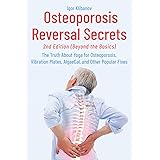The quest for effective yet accessible fitness often leads individuals to innovative approaches, and statistics consistently demonstrate the need for workouts that accommodate diverse physical needs. For instance, reports indicate that over 50% of adults experience musculoskeletal pain annually, with knee pain being a prevalent complaint. This highlights a critical demand for exercise modalities that deliver robust cardiovascular benefits and facilitate fat burning without exacerbating joint stress. The accompanying video, a vibrant 30-minute diet dance workout, exemplifies this perfect synergy, offering a “knee-friendly” and “no-jumping” solution that harnesses the power of LISS (Low-Intensity Steady-State) cardio for optimal results.
Engaging with a diet dance workout like the one above offers a compelling alternative to high-impact routines, meticulously designed for sustained energy expenditure and adipose tissue reduction. Our exploration will delve into the scientific underpinnings of this unique exercise form, illustrating how it strategically contributes to weight management, enhances cardiovascular health, and promotes overall well-being. This article acts as a comprehensive guide, expanding on the concepts demonstrated in the video to provide an expert-level understanding of its physiological benefits.
The Efficacy of LISS Cardio for Sustained Fat Burning
Firstly, understanding LISS cardio is paramount when dissecting the effectiveness of a fat-burning cardio aerobics session. LISS involves performing aerobic activity at a consistent, moderate pace for an extended duration, typically between 30 to 60 minutes, where your heart rate remains at approximately 50-65% of its maximum. Unlike high-intensity interval training (HIIT), which primarily utilizes glycogen stores, LISS cardio preferentially taps into fat reserves as its primary fuel source after an initial warm-up period. Research published in the Journal of Sports Sciences underscores that while HIIT can burn more calories in a shorter period, LISS can achieve comparable total fat oxidation over a longer, less strenuous session, especially for individuals whose bodies are more adapted to aerobic endurance.
This sustained energy expenditure during a low-impact dance workout triggers a significant shift in substrate utilization, moving away from carbohydrates towards lipids. The continuous, rhythmic movements, such as those performed in the accompanying video’s knee-friendly dance workout, maintain an elevated metabolic rate without pushing the body into an anaerobic state where excess lactate accumulation might limit exercise duration. Furthermore, LISS cardio has been shown to be less taxing on the central nervous system and endocrine system, reducing the release of stress hormones like cortisol compared to very high-intensity training, which can be advantageous for long-term adherence and overall health outcomes. It fosters metabolic flexibility, teaching the body to efficiently burn fat for fuel, a cornerstone of effective weight management and body composition improvement.
The Kinesthetic Advantage: Dance as a Modality for Fitness and Well-being
Secondly, integrating dance into a cardio regimen offers multifaceted benefits extending beyond mere physical exertion. Dance fitness classes, particularly those designed as a diet dance workout, engage multiple muscle groups simultaneously, enhancing muscular endurance, coordination, balance, and proprioception. A 2017 meta-analysis in the Journal of Sport and Health Science concluded that dance interventions significantly improve cardiorespiratory fitness, body composition, and quality of life across various populations. The inherent joy and expressiveness of dance transform exercise from a chore into a pleasurable activity, markedly increasing adherence rates.
This “fun factor” is critical for long-term engagement, especially for individuals seeking consistent fat burning cardio aerobics. When participants enjoy their workout, they are more likely to perform it regularly, fostering sustainable habits. The musical accompaniment, as evidenced by the lyrical transcript in the video, further enhances motivation and rhythm, making the 30-minute workout feel less arduous. Beyond the physiological, dance cultivates a strong mind-body connection, offering a powerful avenue for stress reduction and mood elevation, thanks to the release of endorphins and engagement in a creative process. This holistic approach makes dance an exceptional tool for a comprehensive fitness journey.
Architecting a Knee-Friendly, No-Jumping Workout for Joint Integrity
Thirdly, the designation “knee friendly” and “no jumping” for this LISS cardio workout addresses a crucial barrier to exercise for many individuals. High-impact movements, while effective for some, can place considerable stress on joints, particularly the knees, hips, and ankles, potentially leading to discomfort or injury. This low-impact dance workout explicitly mitigates these risks by focusing on fluid, controlled movements that keep at least one foot on the ground at all times. Studies from biomechanics research demonstrate that eliminating jumps significantly reduces the peak ground reaction forces on joints, making the workout accessible and safe for individuals with pre-existing joint conditions or those new to exercise.
The structured “active breaks” mentioned in the video’s voice-over contribute to the workout’s accessibility, allowing participants to recover briefly and mentally prepare for the next round. These intermittent pauses can enhance performance and prevent premature fatigue, crucial for maintaining the target heart rate zone necessary for optimal fat oxidation. By prioritizing joint integrity, this 30-minute diet dance workout broadens the demographic of individuals who can safely participate in vigorous exercise, ensuring that everyone can pursue their fat burning and cardiovascular fitness goals without compromise. The focus on controlled, deliberate motions also strengthens stabilizing muscles around the joints, offering protective benefits over time.
Synergizing Diet and Dance for Optimal Weight Management Outcomes
Fourthly, the term “diet dance workout” inherently suggests a synergistic relationship between physical activity and nutritional practices for effective weight management. While the video focuses on the exercise component, achieving sustainable fat burning fundamentally requires a calorie deficit—consuming fewer calories than the body expends. Engaging in a regular LISS cardio workout like this significantly contributes to the “calories out” side of the energy balance equation. For instance, a 30-minute session can burn approximately 200-400 calories, depending on individual factors, creating a substantial contribution to a daily deficit when combined with mindful eating.
Beyond direct calorie expenditure, consistent physical activity improves insulin sensitivity and glucose metabolism, which are vital for controlling appetite and preventing fat storage. Exercise also builds lean muscle mass, albeit slowly with LISS, which in turn boosts resting metabolic rate, causing the body to burn more calories even at rest. A comprehensive approach, where enjoyable fat burning cardio aerobics complements a balanced, nutrient-dense diet, is proven to be far more effective for long-term weight loss and maintenance than either component in isolation. This integrated strategy fosters healthy habits that extend beyond the gym, impacting daily choices and promoting overall well-being.
Engaging in a consistent low-impact dance workout regimen, as demonstrated in the video, offers a powerful tool for enhancing cardiovascular health, improving body composition, and elevating mood. By embracing the principles of LISS cardio and the inherent enjoyability of dance, individuals can achieve significant progress in their fat burning journey while safeguarding joint health. This 30-minute diet dance workout stands as a testament to the efficacy of accessible, engaging fitness, proving that vigorous activity doesn’t always necessitate high impact to yield profound benefits.











